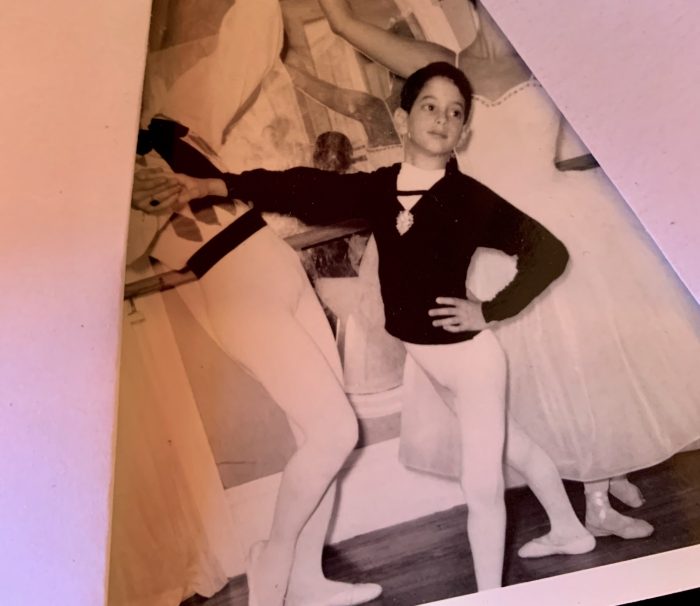When I turned 70 this year and reflected on what brought meaning and enjoyment to my life, I was surprised to see how important dance was.
Sure, it wasn’t as central to me as connections with my family and close friends, but it mattered a lot.
I decided to write about the value of dance for two audiences. The first was myself. I wanted to gain a deeper appreciation for the place of dance in my life. When I write about a life pursuit, like yoga, for example, I end up valuing it even more and seeing it in new ways. I had never written anything about dance, and intuitively, I sensed it was time.
The second audience consisted of guys and fellow seniors, of any gender, who might not have thought much about the potential of dance as life enrichment. I refer to guys, because, despite our culture being more open than ever to new ways of thinking about gender and gendered activities, far fewer men dance than women. In my dance classes, out of 20 participants, typically, I’m one of only two or three males. This seems a shame. Dance has much to offer men as well as women—and, I would imagine, to people who identify as nonbinary.
I refer to older people as an audience because dance can seem intimidating to seniors when the dance we’re most exposed to is done by young and strikingly fit performers. But my experience as an ordinary old guy is that dance can be pleasing, satisfying, and beneficial regardless of age or level of fitness.
This article, then, is a kind of invitation to men and seniors to consider the possible blessings of dance.
Wholeness
For me, the first blessing of dance is the greater sense of wholeness it brings. I mean two things by wholeness. The first concerns my own life story. I took ballet classes as a boy, roughly, from kindergarten through the end of third grade, and even had the good fortune of dancing in the New York City Ballet Company’s performance of The Nutcracker in 1959. The photo accompanying this article is a picture I took on my iPhone of a photo of myself from more than 60 years ago.
I stopped dancing in fourth grade so that I could be more like the other boys in my school and focus on pursuits like basketball and touch football. For nearly six decades, the only dancing I did was at parties and celebrations, and I lost memory of specific dance movements. When I rediscovered dance in my late 60s, I felt like a long-rejected part of me, my dancer self, was coming back home. Wholeness in my life meant an acceptance of my dancing spirit and early experience.
Wholeness also meant something more general, less tied to my particular story. This was about integrating in my life the kind of movement that dance represents, a movement that is both artful and free. To embrace this movement is to experience a fuller, more whole sense of what it means to move on this earth.
Expansive Freedom
When I dance, there are times I feel an expansive, confident, and expressive freedom. It’s as if I’m saying to myself and to the world, “Here I am. Yes, I can. Want to join me?”
And this sense of exhilarating possibility does not depend on fancy or complex choreography; if it did, I’d rarely feel it.
Simple movements can both represent and evoke open, hopeful freedom.
For example, in the warm-up sequence in a class I take, there’s a move I call “Push-off and Sweep Up” (I don’t know if there is a more formal name). This involves pushing off on one foot, extending the working leg out to the side and up, and sweeping the opposite arm across the body and up overhead, with fingers reaching to the sky. And then, just for a moment, at the peak of the rising leg and sweeping arm, I do my best to pause in balance and ready myself for the next action. This is like so many dance movements in which you lift, rise, sweep, and soar while balancing with steady roots.
Surely, dance is about more than a spacious, confident presence. Dance also can express and evoke sadness, struggle, and other difficult emotions and experiences. But for me, a special blessing of dance is the delight in fluid and expansive freedom.
Gracefulness
Dance is graceful. Its shapes and movements carry dignity and, at times, elegance.
I do not find this in all forms of movement. For example, a few months ago, I tried a movement class at a gym that was very fast-paced and certainly got my heart rate up. But the movements struck me as jerky, choppy, clunky, and aimless.
The gracefulness of dance that I’m referring to is not about conforming our bodies to a model of grace that a professional dancer exhibits. It’s about opening to the grace that flows through movements that we undertake with self-respect, inner harmony, and expressiveness.
But established dance genres, like classical ballet, lyrical jazz, and Latin dances, can be helpful in finding grace within us. For example, in ballet, the supple movement of the arms and hands, their folding and unfolding, rounding and rolling, and sweeping, swirling, and floating actions hold a great potential to stir the grace we carry inside.
Yet I don’t have to attempt an intricately sequenced “Port de Bras” to find grace. A simple gesture of the wrists, hands, and arms that I do in another warm-up exercise in my class, for example, can suffice.
In the warm-up move I’m thinking of, which I call “outreaching wrist rolls,” I join the back of my hands together, roll my wrists open, and unfold my arms while I step forward diagonally. As smoothly as I can, I then reverse the movement, folding my wrists and arms inward and back to my heart, while stepping back to center.
This rhythmical gesturing feels graceful to me, and it also is heart-opening and heart-nourishing. My hands become my heart, opening outwardly to the world and to others, and then gliding in and back to center.
A measure of grace is naturally attainable in dance. Extensive training may add aesthetic refinement to this quality. But even untrained people like me can find grace in basic dance patterns.
Collective Effervescence
Collective effervescence is a term I’m borrowing from the organizational psychologist Adam Grant, who, in a NY Times opinion piece on the joy we missed during the pandemic, borrowed it from the early 20th-century French social theorist, Émile Durkheim.
The concept refers to “the sense of energy and harmony people feel when they come together in a group around a shared purpose. Collective effervescence is the synchrony you feel when you slide into rhythm with strangers on a dance floor, colleagues in a brainstorming session, cousins at a religious service, or teammates on a soccer field…Collective effervescence happens when joie de vivre spreads through a group.”
Coming together with others to dance, in a class or a social setting, is a wonderful way to experience the kind of shared energetic vibrancy represented by the term collective effervescence.
Personal Connections
Dance also can foster or deepen person-to-person connections.
For example, dance has been a pleasing bond between my wife, who has a rich dance background, and me. My wife’s positive experience with an all-levels dance class in our home city piqued my curiosity. I accompanied her to class one morning and became absorbed in the experience. She and I have been enjoying the class together ever since (although during the pandemic, we could not attend live classes).
Also, my mother, who is 93, has danced most of her life and still takes private dance lessons when her health permits. Talking about dance with Mom is a special form of closeness.
I’m grateful to dance. It fosters personal wholeness, more spacious and freer self-expression, and quality of grace. It also can support collective exuberance and closer interpersonal bonds. I look forward to deepening my dance experience. And I encourage others to give dance a try.
Acknowledgments:
I’d like to express my gratitude to Laura Haney, a brilliant dancer and caring teacher who steadily inspires and shows the way. I also wish to thank Sherry Zunker for creating “BeMoved,” a broadly accessible, multi-genre dance program in which Laura serves as a senior teacher. A final gesture of gratitude goes to BodyVox, a welcoming dance center in Portland, Oregon, where my wife and I have happily experienced BeMoved.











Read 11 comments and reply